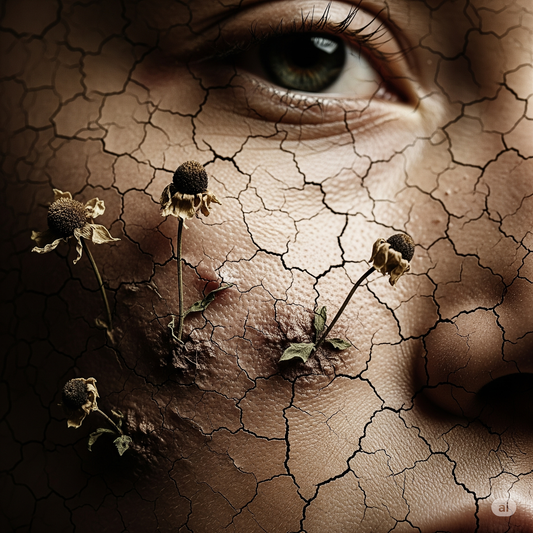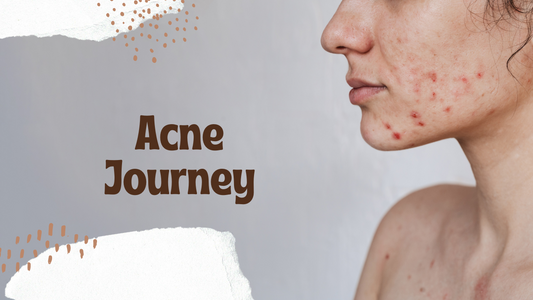Aging is an inevitable biological process, but scientific advancements in dermatology have identified ingredients that can effectively slow down its visible signs. Among all the anti-aging ingredients available, retinoids (Vitamin A derivatives) have the strongest clinical backing for their ability to improve skin texture, reduce wrinkles, and promote collagen production. Among the retinoids, Tretinoin, also known as all-trans retinoic acid (ATRA), has the highest evidence for use in anti-aging. Retinol, which is available over the counter, is 20 to 30 times weaker than Tretinoin. This article explores the evidence behind retinoids, their mechanisms, and how they compare to other anti-aging ingredients.
Table of Contents
What Are Retinoids?
Retinoids are a class of compounds derived from Vitamin A that regulate cell growth and differentiation. The most potent and well-studied retinoid is tretinoin (all-trans retinoic acid), which has been used since the 1980s for treating photoaging and acne. Other forms include retinol, retinaldehyde, adapalene, and tazarotene, each varying in potency and efficacy.
Clinical Evidence Supporting Retinoids
1. Reduction of Wrinkles and Fine Lines
Multiple studies confirm that tretinoin increases collagen production and decreases collagen breakdown. A landmark study published in the New England Journal of Medicine found that tretinoin significantly improved fine wrinkles, skin roughness, and hyperpigmentation after 16 weeks of use (Kligman et al., 1986). More recent studies have reinforced these findings, showing increased epidermal thickness and improved dermal matrix organization with consistent use (Mukherjee et al., 2006).
2. Collagen Synthesis and Skin Elasticity
Retinoids stimulate fibroblast activity, leading to the production of Type I and Type III collagen, which are essential for maintaining skin structure. As we age, collagen levels in the skin reduce, and with the effect of gravity, the skin starts to lose its elasticity and droop—this is when we start noticing fine lines and wrinkles. A study in Archives of Dermatology demonstrated that tretinoin-treated skin showed a significant increase in procollagen I mRNA levels, indicating higher collagen synthesis (Griffiths et al., 1993).
3. Acceleration of Cell Turnover
Retinoids enhance epidermal turnover, meaning that they promote the shedding of old, damaged skin cells and encourage the formation of new ones. This process improves skin texture, reduces roughness, and helps fade pigmentation issues such as age spots and melasma (Leyden et al., 1989).
4. Prevention of Photodamage
Chronic UV exposure leads to premature skin aging, also known as photoaging. Retinoids have been shown to repair and prevent UV-induced damage by downregulating matrix metalloproteinases (MMPs)—enzymes that break down collagen. A study in Journal of Investigative Dermatology found that topical tretinoin prevented collagen degradation and restored lost elasticity in sun-damaged skin (Fisher et al., 1996).
How Do Retinoids Compare to Other Anti-Aging Ingredients?
1. Sunscreen (SPF 30+)
- Prevents UV-induced aging but does not reverse existing wrinkles.
- Essential for retinoid users, as retinoids can increase sun sensitivity.
2. Vitamin C (Ascorbic Acid)
- Brightens skin and neutralizes free radicals but does not stimulate collagen as effectively as retinoids.
3. Hyaluronic Acid
- Provides hydration and plumps skin but does not stimulate collagen production.
4. Peptides
- Help repair skin and boost elasticity but have less evidence for wrinkle reduction compared to retinoids.
5. Alpha Hydroxy Acids (AHAs) & Beta Hydroxy Acids (BHAs)
- Improve skin texture through exfoliation but do not promote collagen production as effectively as retinoids.
How to Use Retinoids Effectively
To maximize the benefits of retinoids while minimizing irritation:
- Start with a low concentration and gradually increase.
- Apply at night, as retinoids degrade in sunlight.
- Use moisturizer and sunscreen daily to prevent dryness and UV sensitivity.
- Be patient—visible improvements typically take 8 to 12 weeks.
Formial makes using potent retinoids easy
Potent retinoids such as Tretinoin are prescription-grade ingredients. This means they should only be used under the guidance of a medical practitioner. Formial Labs provides you with access to a highly trained team of dermatologists over WhatsApp who have collectively initiated thousands of patients on tretinoin.
Conclusion
Among all anti-aging ingredients, tretinoin has the strongest evidence for its ability to reduce wrinkles, improve skin texture, and stimulate collagen production.
Glossary
- Retinoids: A class of compounds derived from Vitamin A that regulate cell growth and differentiation.
- Tretinoin (ATRA): A prescription-strength retinoid used for treating photoaging and acne, and for stimulating collagen production.
- Vitamin A: A fat-soluble vitamin essential for maintaining skin health.
- Retinol: A milder, over-the-counter form of retinoid.
- Type I and Type III collagen: Structural proteins that maintain skin firmness and elasticity.
- Photoaging: Premature aging of the skin caused by chronic UV exposure.
- Epidermal turnover: The process by which the skin sheds old cells and generates new ones.
- Age spots: Dark patches on the skin resulting from sun exposure.
- Melasma: A condition causing brown patches on the skin, often related to sun exposure.
References
- Kligman, A. M., et al. (1986). "Topical Retinoic Acid for Photoaging." New England Journal of Medicine.
- Mukherjee, S., et al. (2006). "Retinoids in the Treatment of Skin Aging: An Overview of Clinical Efficacy and Safety." Clinical Interventions in Aging.
- Griffiths, C. E., et al. (1993). "Restoration of Collagen Formation in Photodamaged Human Skin by Tretinoin." Archives of Dermatology.
- Fisher, G. J., et al. (1996). "Retinoic Acid Inhibits Matrix Metalloproteinase Expression Induced by Ultraviolet Radiation in Human Skin." Journal of Investigative Dermatology.
- Leyden, J. J., et al. (1989). "Treatment of Photodamaged Facial Skin with Topical Tretinoin." Journal of the American Academy of Dermatology.
- Draelos, Z. D. (2007). "The Role of Vitamin C in Anti-Aging Skin Care." Dermatologic Surgery.





